In the realm of fastening technology, self-tapping screws have revolutionized the way we assemble materials and structures. These innovative screws possess the unique ability to create their threads as they are driven into various materials, eliminating the need for pre-drilling pilot holes. This characteristic makes them indispensable in a wide range of applications, from construction and manufacturing to DIY projects. In this article, we will explore the mechanics, benefits, applications, and variations of self-tapping screws, shedding light on their importance in modern engineering and construction.
Guide to Self Tapping Screw – Self Tapping Screw and What Is It Used for?
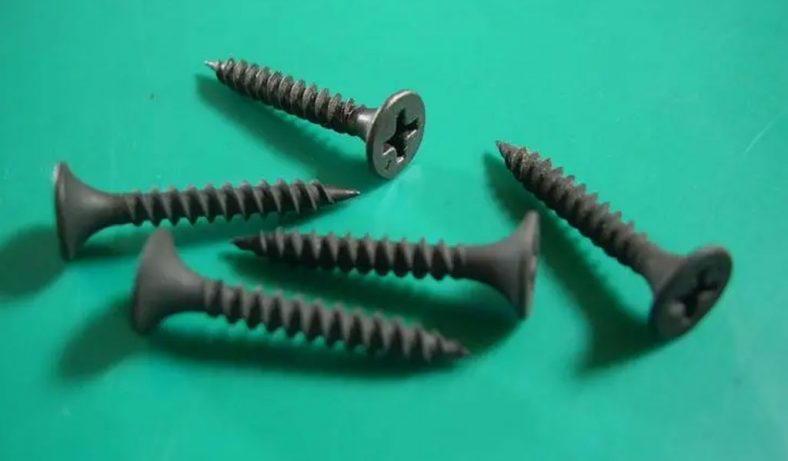
Self-tapping screws are a type of threaded fastener that can create their own mating threads within a material, making them a self-reliant option for joining components.This fascinating ability is achieved through their distinctive design, featuring a sharp, pointed end combined with spaced threads that serve as cutting edges. When driven into a material, the screw’s cutting edges engage with the material, removing it and forming the necessary threads.Self-tapping screws are a type of fastener designed to create their own mating threads as they are driven into materials, eliminating the need for pre-drilling pilot holes. This unique feature sets them apart from traditional screws, making them more efficient and user-friendly in a wide range of applications.
Understanding Screw Related Articles: Machining, Surface Treatment, Materials and More of Screws: Precision Engineering at its Finest
How Self-Tapping Screws Work:
The design of self-tapping screws is crucial to their functionality. They typically have a sharp, pointed end and spaced threads that act as cutting edges. As the screw is rotated and driven into the material, the pointed end acts as a drill bit, creating a pilot hole. The cutting edges of the threads then engage with the material, displacing it and forming the threads needed for secure fastening.
Advantages of Self-Tapping Screws:
- a. Time Efficiency: Self-tapping screws eliminate the need for pre-drilling pilot holes, saving valuable time in various applications.
- b. Cost Savings: With reduced labor and fewer tools required, using self-tapping screws can result in cost savings during assembly processes.
- c. Convenience: Self-tapping screws simplify the fastening process, as users do not need to switch between drilling and fastening tools.
- d. Strong Connections: The formed threads provide a reliable and strong connection between components, ensuring a durable assembly.
- e. Versatility: Self-tapping screws are compatible with various materials, including metals, plastics, and wood, making them suitable for diverse applications.
- f. Reduced Risk of Material Damage: Unlike pre-drilling, which may cause splitting or damage to certain materials, self-tapping screws create their threads without the risk of such issues.
Types of Self-Tapping Screws
- a. Thread Types: Self-tapping screws are available in different thread types, such as coarse thread, fine thread, and high-low thread, each suitable for specific applications and materials.
- b. Head Types: These screws feature various head types, including pan head, flat head, truss head, and round head, each offering different aesthetics and functionality.
- c. Material and Coating: Self-tapping screws come in different materials like stainless steel, carbon steel, and aluminum, often with various coatings to enhance corrosion resistance.
Applications of Self-Tapping Screws:
Due to their advantages and versatility, self-tapping screws are used in a wide range of industries and applications, including:
- a. Construction: Self-tapping screws are commonly used in metal construction for roofing, cladding, and structural assemblies.
- b. Manufacturing: They are essential in manufacturing industries for assembling appliances, furniture, electronics, and automotive components.
- c. DIY Projects: DIY enthusiasts often use self-tapping screws for various home improvement and craft projects.
- d. Plumbing: Self-tapping screws are utilized in plumbing applications to secure pipes, fixtures, and fittings.
- e. Electronics: The electronics industry relies on self-tapping screws for fastening components and PCBs.
- f. Woodworking: In woodworking projects, self-tapping screws provide a quick and efficient way to join wood pieces.
Tips for Proper Usage:
To ensure the best results when using self-tapping screws, consider the following tips:
- a. Select the right screw size, thread type, and head type for the specific application and material.
- b. When using power tools, set the drilling speed appropriately to avoid damaging the material or stripping threads.
- c. Avoid over-tightening, as it may lead to thread stripping or material damage. Use torque-limiting tools or hand tightening when necessary.
- d. For harder materials like stainless steel, consider creating a pilot hole to facilitate the screwing process.
Self-tapping screws have transformed the way we approach fastening technology, providing a more efficient and convenient solution for joining materials. Their ability to create their threads without the need for pilot holes makes them indispensable in various industries, from construction and manufacturing to DIY projects. As technology continues to advance, self-tapping screws are likely to evolve further, driving progress in fastening methods and enhancing their importance in modern engineering and construction.
The Development History of Self Tapping Screw
The development of self-tapping screws is an interesting journey that spans several centuries. The evolution of these innovative fasteners has been driven by the need for more efficient and user-friendly methods of joining materials. Let’s explore the key milestones in the development history of self-tapping screws:
- Early Beginnings: The concept of self-tapping screws can be traced back to the 19th century. Early iterations were relatively simple and lacked the advanced designs seen today. These early screws had rough threads and were primarily used for woodworking and light metal applications.
- Industrial Revolution and Mass Production: With the advent of the Industrial Revolution in the late 18th and 19th centuries, manufacturing processes improved significantly. The production of screws became more automated, allowing for mass production and a wider range of applications. During this period, self-tapping screws gained popularity for their time-saving attributes compared to traditional screws that required pilot holes.
- Advancements in Screw Designs: In the early 20th century, there were significant advancements in screw designs, including self-tapping screws. Engineers and inventors experimented with different thread configurations, materials, and head types to improve the efficiency and versatility of these fasteners.
- World War II and Technological Advances: World War II was a turning point for self-tapping screws as they were extensively used in military applications. The demand for more efficient and faster assembly methods led to further improvements in screw designs and manufacturing processes. Technological advances during and after the war helped refine self-tapping screws and enhance their performance.
- Introduction of Different Materials: As materials science progressed, the range of materials used for self-tapping screws expanded. Initially made primarily from steel, screws were later manufactured using stainless steel, aluminum, and various alloys to suit specific applications and environments.
- Diverse Applications and Industries: From the mid-20th century onwards, self-tapping screws found increasing use in a wide array of industries and applications. Their versatility, efficiency, and ability to join various materials made them indispensable in construction, manufacturing, automotive, electronics, and DIY projects.
- Advancements in Coatings and Surface Treatments: To address concerns of corrosion and improve durability, researchers and manufacturers introduced various coatings and surface treatments for self-tapping screws. These treatments enhanced their resistance to rust and wear, further expanding their usability in demanding environments.
- Specialized Designs and Applications: With the growing demand for customized solutions, self-tapping screws began to be designed for specific applications. Specialized screws, such as those for plastics or high-strength materials, were developed to meet the unique requirements of various industries.
- Integration with Power Tools: The integration of self-tapping screws with power tools, such as electric drills and impact drivers, further increased their popularity and ease of use. This led to even greater efficiency and convenience in fastening processes.
- Modern Developments: As of the knowledge cutoff in September 2021, self-tapping screw technology continued to advance with ongoing research and development. Improvements in materials, coatings, thread designs, and manufacturing techniques were aimed at enhancing their performance and meeting evolving industry needs.
The development history of self-tapping screws demonstrates the relentless pursuit of more efficient and user-friendly fastening solutions. From humble beginnings to sophisticated designs, these innovative fasteners have transformed the way we assemble materials and structures. Their evolution continues to play a crucial role in various industries, ensuring faster, more reliable, and convenient assembly processes.
The Differences Of Self Tapping Screws vs Self Drilling Screws
Self-tapping screws and self-drilling screws are two distinct types of fasteners commonly used in construction, manufacturing, and DIY projects. While they both serve the purpose of fastening materials, they have key differences in their design and application. Let’s explore the dissimilarities between self-tapping screws and self-drilling screws:
Thread Design and Function:
- Self-Tapping Screws: Self-tapping screws have threads with cutting edges that are designed to create mating threads within the material they are driven into. They do not require pre-drilled pilot holes, as they can cut their own threads while being screwed in. This makes them suitable for softer materials like wood, plastic, and certain metals.
- Self-Drilling Screws: Self-drilling screws, also known as Tek screws or self-drillers, have a drill-like pointed end with a sharp tip. This enables them to drill a hole as they are screwed into the material. They have a high drill point strength and are specifically designed for drilling through metal and other hard materials. The threads of self-drilling screws are typically meant for fastening purposes rather than thread-forming.
Application
- Self-Tapping Screws: These screws are commonly used in applications where the material is soft enough to allow the screw to create threads as it is driven in. They are frequently used in woodworking projects, fastening plastic components, and securing materials like gypsum board or drywall.
- Self-Drilling Screws: Self-drilling screws are ideal for applications where drilling through harder materials, such as steel, aluminum, or stainless steel, is necessary. They are extensively used in metal construction, roofing, and cladding, as well as in the automotive and HVAC industries.
Use of Pilot Holes:
- Self-Tapping Screws: As mentioned earlier, self-tapping screws do not require pre-drilled pilot holes because they can form their own threads. However, in certain situations or when dealing with harder materials, using pilot holes can still be beneficial to ease screw insertion.
- Self-Drilling Screws: Self-drilling screws have drill-like tips that allow them to create their pilot holes. They are specifically designed to eliminate the need for pre-drilling pilot holes in metal and other hard materials, saving time and effort during installation.
Compatibility with Materials:
- Self-Tapping Screws: These screws are best suited for softer materials, including wood, plastic, and some softer metals. Their threads are designed to cut and form mating threads in these materials without damaging them.
- Self-Drilling Screws: Self-drilling screws are ideal for hard materials like steel, aluminum, and stainless steel. Their drilling capabilities allow them to penetrate these materials without the need for pre-drilling pilot holes.
Versatility:
- Self-Tapping Screws: While self-tapping screws are versatile in their own right, their applications are limited to materials that allow thread formation during installation.
- Self-Drilling Screws: Self-drilling screws are highly versatile, as they can be used in both hard and soft materials, making them more adaptable to a broader range of projects and industries.
In conclusion, self-tapping screws and self-drilling screws are designed for different purposes and materials. Self-tapping screws form their threads as they are driven into softer materials, while self-drilling screws have a drill-like point that allows them to drill their own holes in hard materials. Understanding the differences between these two types of screws is crucial for choosing the appropriate fastener for a particular application.
Self Tapping Screw Sizes Explained Table Chart
Understanding self-tapping screw sizes can be essential for selecting the right screw for a particular application. Screw sizes are typically denoted by a number that represents the screw’s diameter, followed by a thread pitch value, which indicates the distance between threads. The following table chart explains the common self-tapping screw sizes:
| Screw Size (Diameter) | Thread Pitch | Major Uses |
|---|---|---|
| #2 | 0.6 mm | Light-duty applications, small electronics, DIY projects |
| #3 | 0.6 mm | Small screws for hinges, locks, and other hardware |
| #4 | 0.7 mm | General-purpose screws for various applications |
| #5 | 0.8 mm | Furniture assembly, light metal applications |
| #6 | 1.0 mm | Woodworking, cabinetry, and other general uses |
| #7 | 1.0 mm | Joining thin metal sheets and light-duty applications |
| #8 | 1.25 mm | Woodworking, construction, and general purposes |
| #10 | 1.5 mm | Heavy-duty woodworking, metal framing, and construction |
| #12 | 1.75 mm | Attaching metal roofing, cladding, and other large-scale projects |
| #14 | 2.0 mm | Joining thick metal sheets and other heavy-duty applications |
The screw size, often denoted by the number, indicates the screw’s diameter, with smaller numbers representing smaller diameters. As the screw size increases, so does its diameter and holding capacity. The thread pitch value refers to the distance between adjacent threads on the screw.
It’s important to select the appropriate screw size and thread pitch based on the materials being fastened and the intended application. Using the wrong size or pitch may result in a weaker connection or cause damage to the material.
Before choosing a self-tapping screw, it’s advisable to consult the manufacturer’s guidelines and consider factors such as the material thickness, load requirements, and the environment in which the screw will be used. Additionally, for critical applications or specific industries, it is recommended to seek professional advice to ensure the best screw selection for the job.
Working With An Experienced Screw Machining Partner
Each of our design tips for short production runs can help you ensure that your production process is as smooth, cost-efficient, and fast as possible. However, there’s a lot to keep track of when optimizing screw for low-volume production, so working with a trusted manufacturing partner is also a valuable opportunity to take some of the weight off your shoulders.
From design through fulfillment, when you work with Be-Cu.com, our team of experienced engineers will provide you with the support you need to make your project possible. Our quality-based tools are designed to help you pinpoint design flaws, determine optimal order quantities, and find the right material for your part’s specific application. Simply click quote and upload your screw files. We can generate instant quotes for both additive manufacturing and CNC machining projects, which means you can get started making your new screw and parts today.
-

Swiss Machining And Bending 304 Hand Sewing Needle For Textile Machinery
-
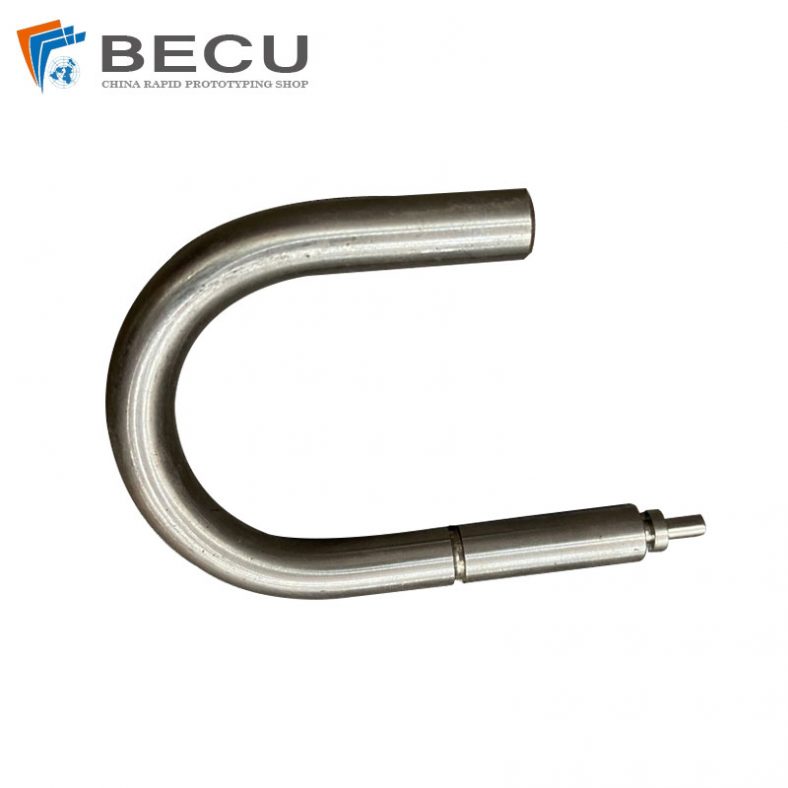
Automatic Swiss Turning Stainless Steel 316L U-bolt
-

CNC Turning-Milling Machining Copper Facial Massage Roller
-

Swiss Turning Stainless Steel 17-4 PH Positioning Bushing
-
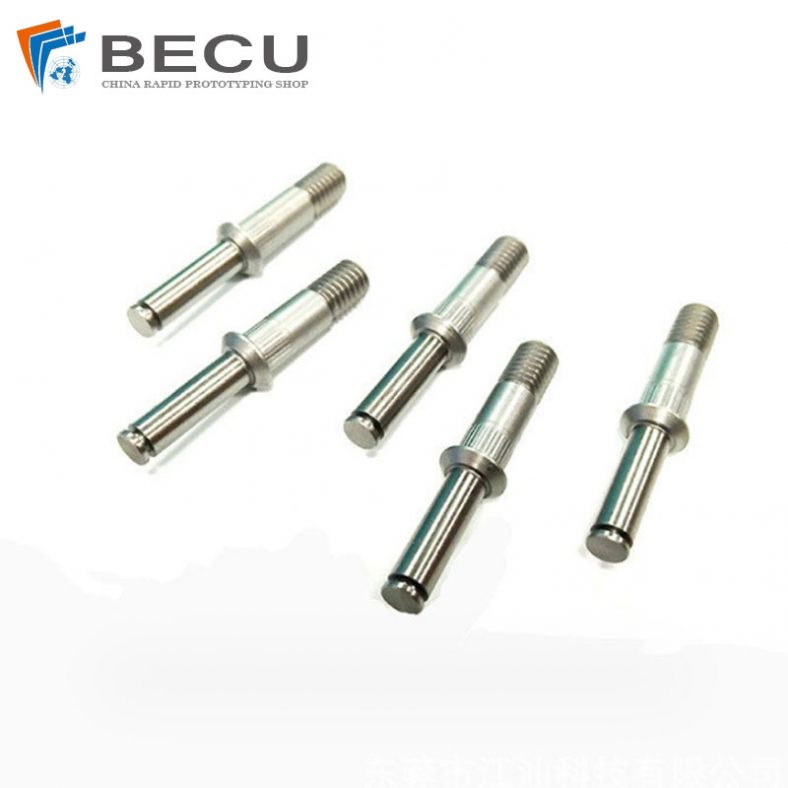
Precision Swiss Turning Titanium Alloy Medical Shaft
-

Swiss Turning 304 Stainless Steel Medical Threaded Rod
-
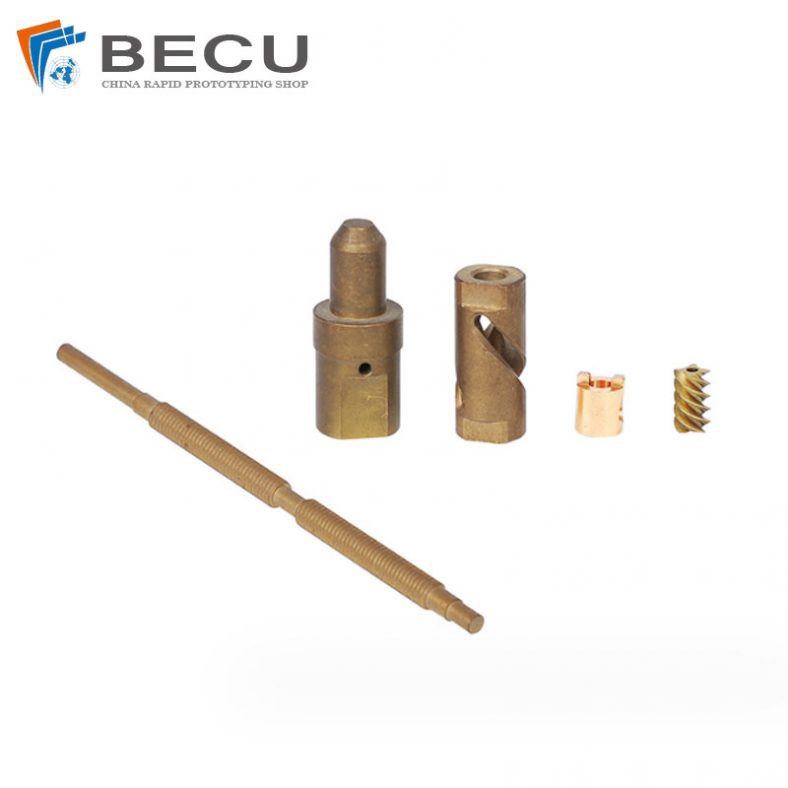
Screw CNC Machining Non-Standard Mandrel Tube Shaft
-

Swiss CNC Machining And Turning Brass 360 Shaft
-
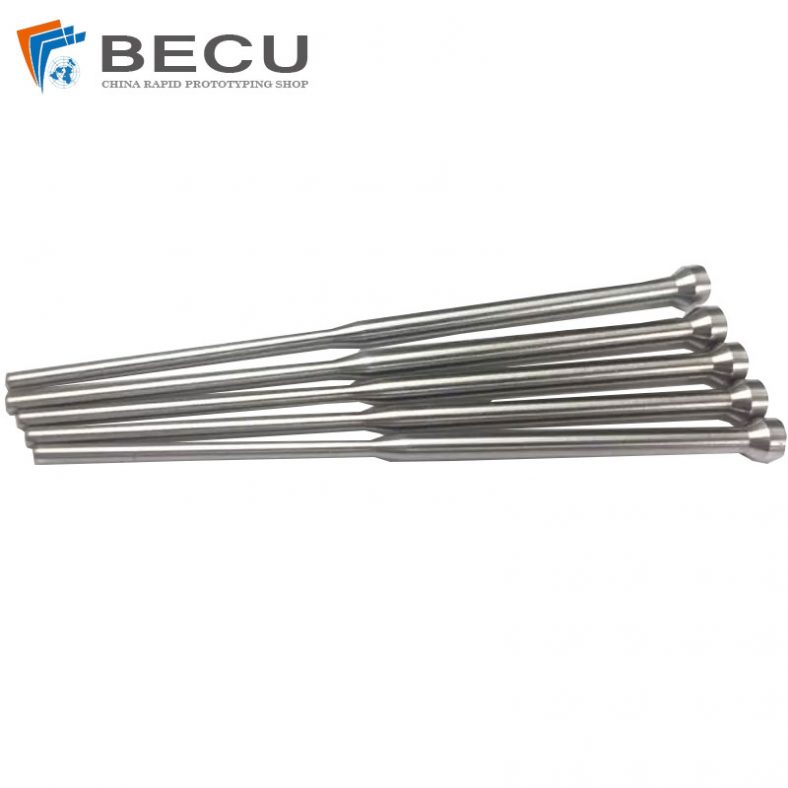
Deep Hole CNC Turning Titanium Alloy Dispensing Needle
-
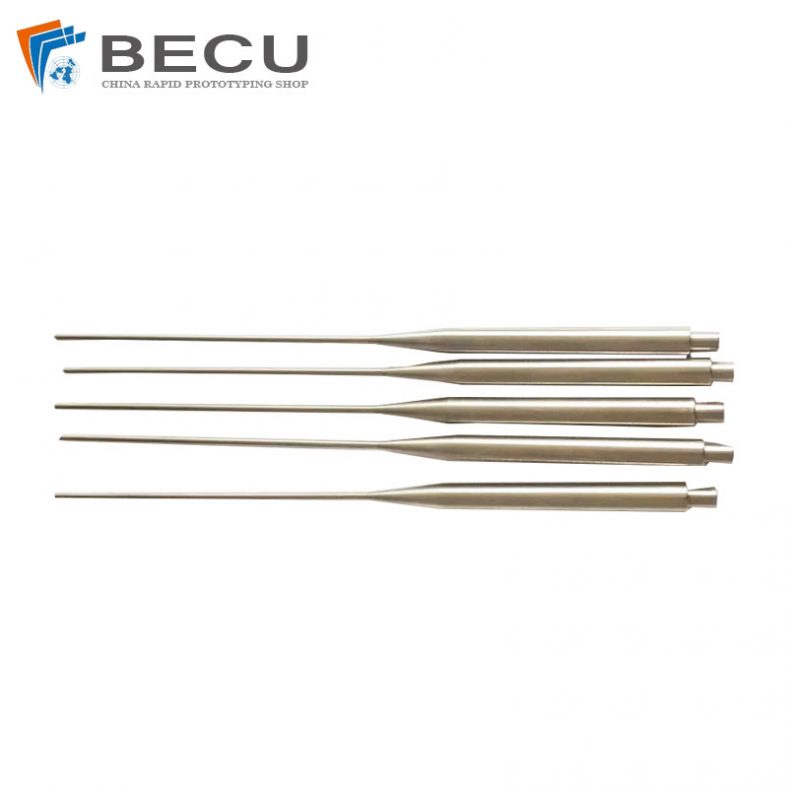
Precision Turning TC4 Alloy Medical Ultrasound Bead Needle
-
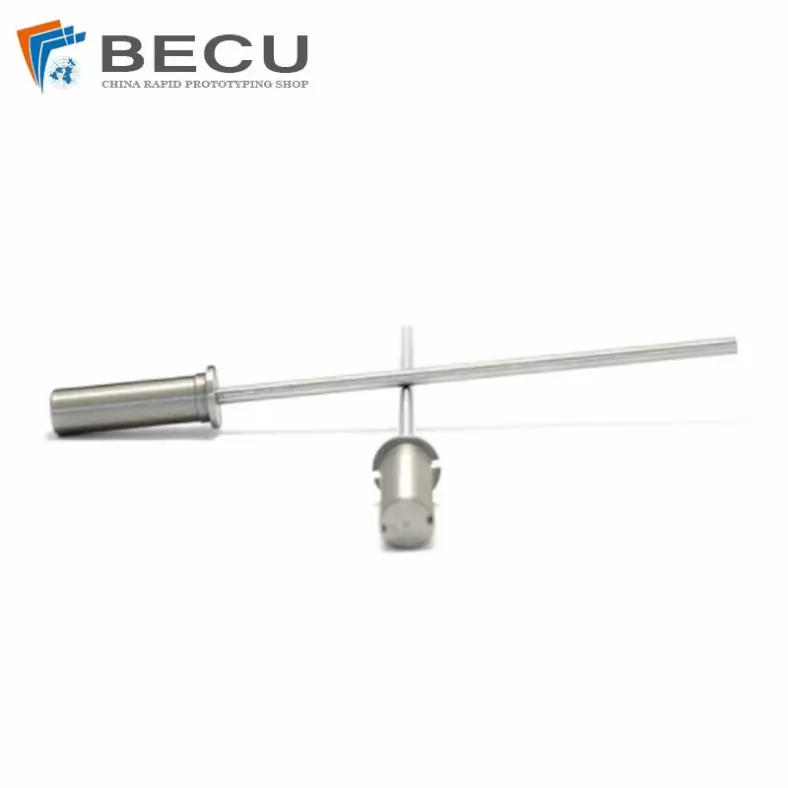
Swiss Machining Stainless Steel Alloy Medical Disposable Trocar
-

Swiss Turning Gold-Plated T2 Copper Parts
